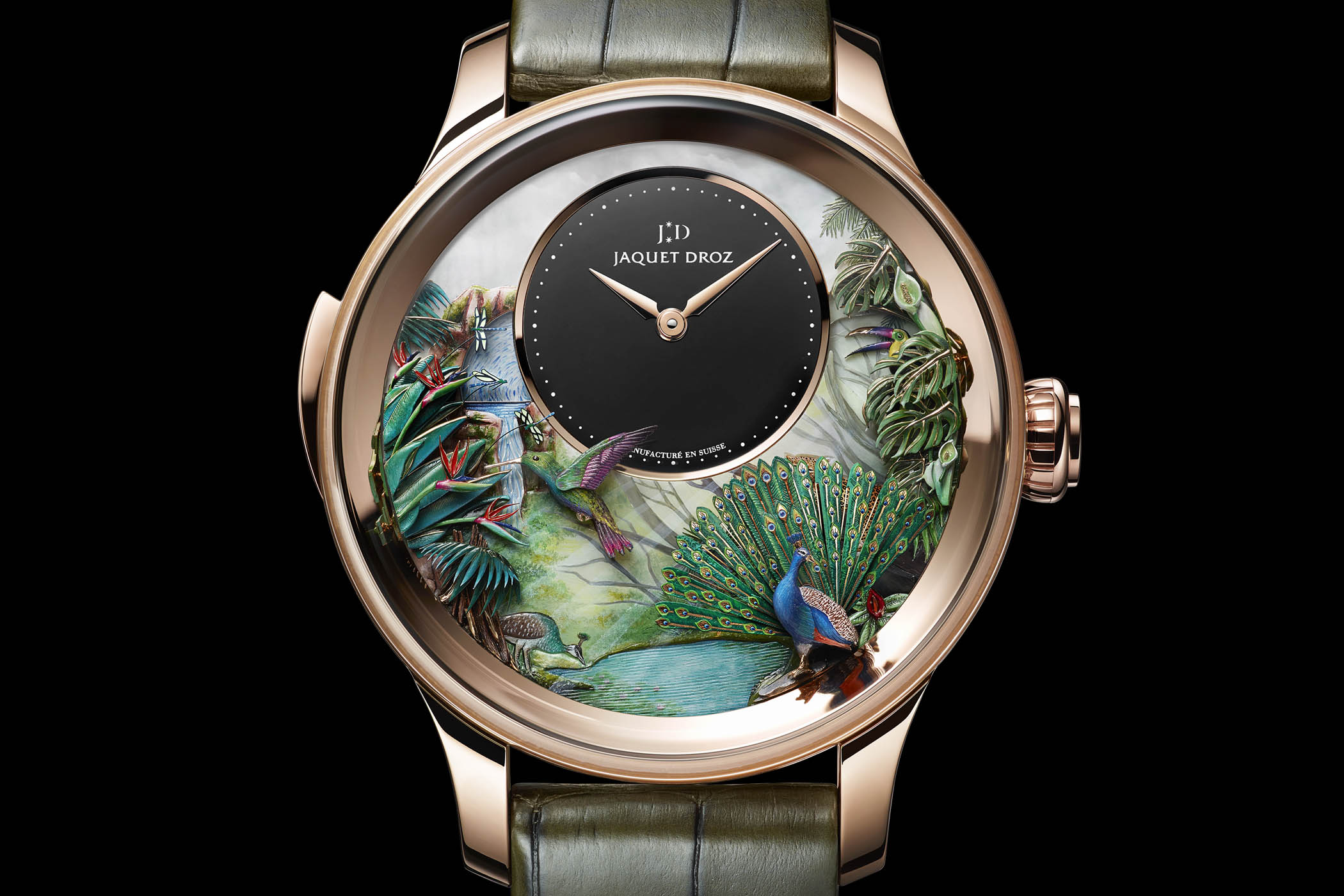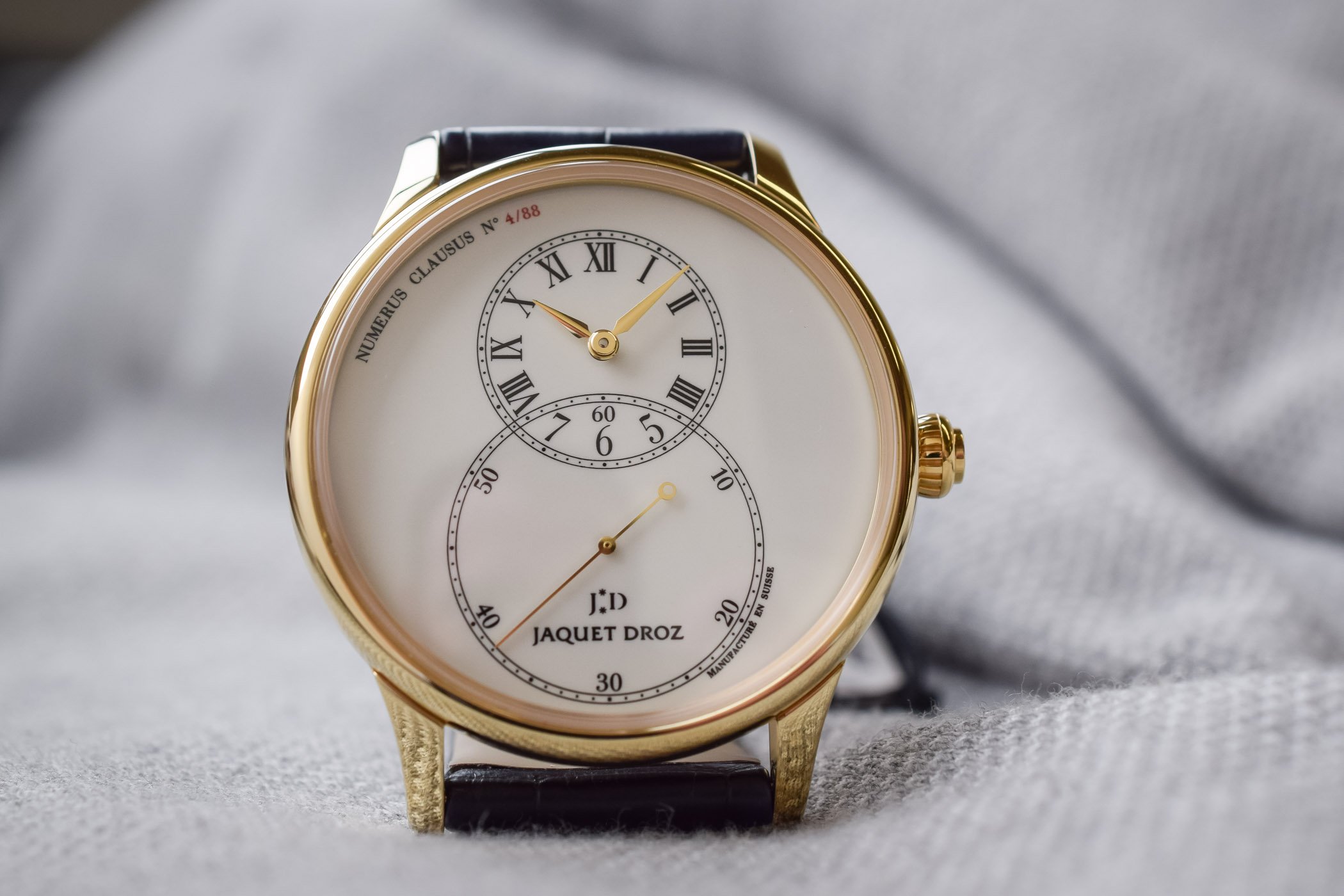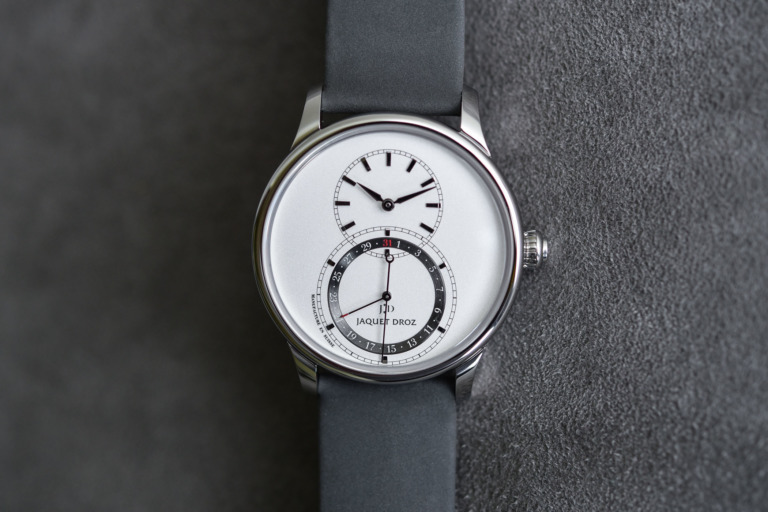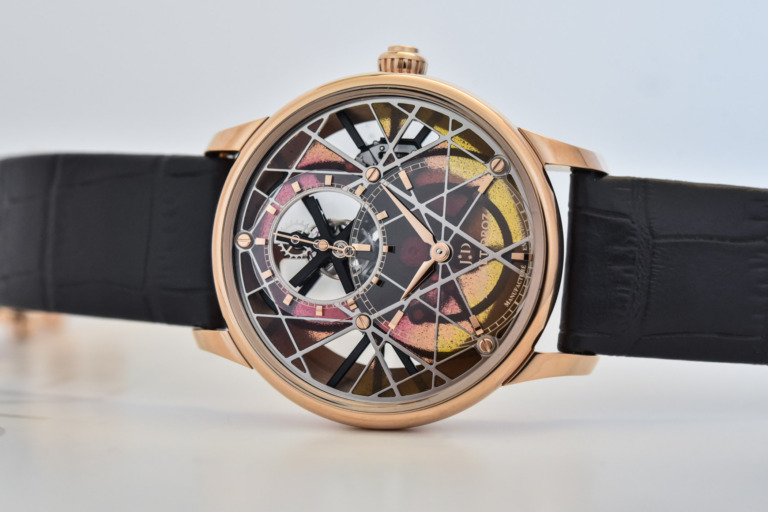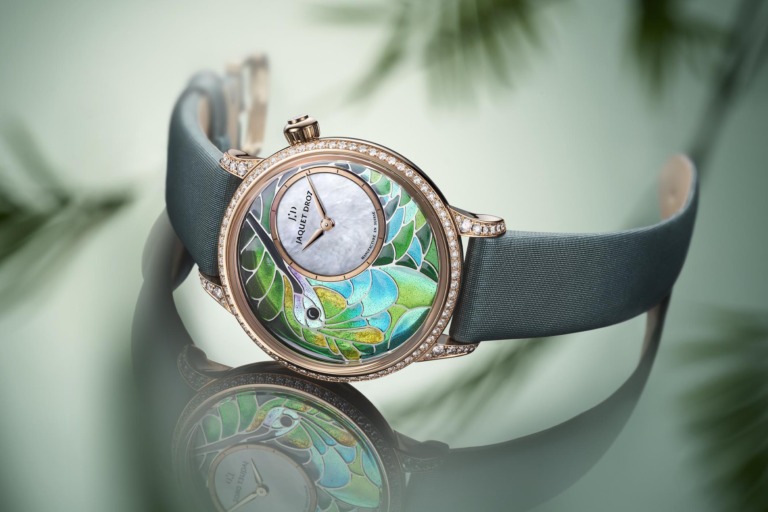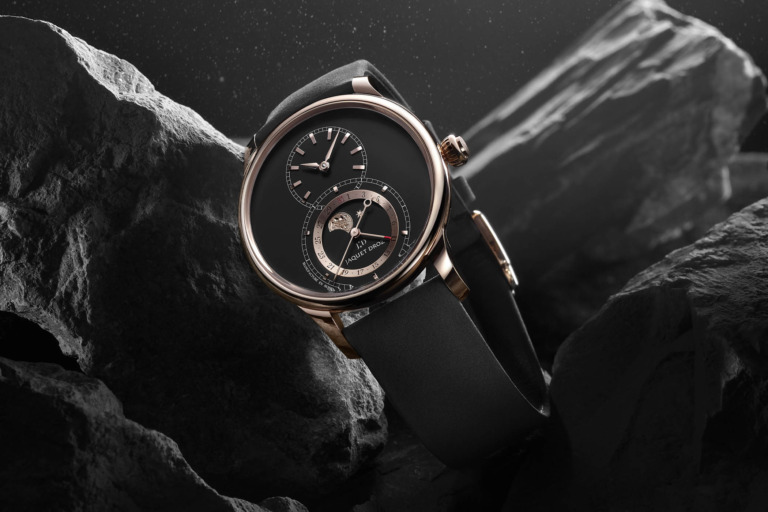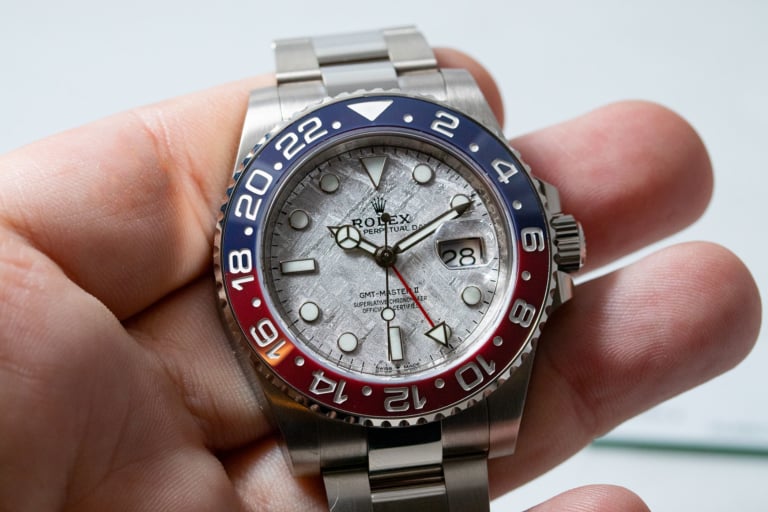Jaquet Droz
Swiss luxury watch manufacturer

Jaquet Droz was founded in 1738 when Pierre Jaquet-Droz opened a workshop in La Chaux-de-Fonds, Switzerland. Following the study of physics and mathematics, Pierre focused on horology and by 1747 his clocks already had automatic chiming and many played music. He travelled to Spain in 1758 with six of his most sophisticated clocks and won the admiration of King Ferdinand VI, who purchased all six for the royal palaces of Madrid and Villaviciosa. He returned home with the necessary capital to pursue an additional mechanical endeavour, automata (which he's best known for). These animated dolls and birds were driven by clockwork-type mechanisms that wowed everyone who saw them, including kings and emperors in Europe, China, India and Japan. In fact, the realism was so disconcerting that he occasionally exposed the mechanics to avoid accusations of witchcraft. Built between 1768 and 1774 by Pierre and his son Henri-Louis and Jean-Frédéric Leschot, a legendary trio of automata became the company's most famous creations - the Writer (made of 6,000 pieces), the Musician (2,500 pieces) and the Draughtsman (2,000 pieces). All three automata are still functional and displayed at the Musée d'Art et d'Histoire of Neuchâtel in Switzerland. Following Pierre's death in 1790 and his son's in 1791, the amazing horological achievements of Jaquet Droz came to a close, only to be revived in the 1990's and acquired by the Swatch Group in 2000. Christian Lattmann is the current CEO.
Although there was a gap of more than 200 years, the new Jaquet Droz remains faithful to the aesthetics and spirit of the 18th-century original. In 2002, the Grande Seconde launched with many design elements of Pierre’s pocket watches, including hour/minute sub-dial at 12 o’clock and seconds sub-dial at 6 o’clock. This configuration is also a new adaptation, playing on the “lucky 8” motif as the number is favoured by the Far East (and Pierre found great success in China). The overlapping sub-dials (the seconds sub-dial being larger) form an “8” on many of the brand’s pieces and helped create a recognisable brand identity for the revived company. Limited editions are (usually) produced in a series of 8, 28 or 88 watches. A tradition also recovered from the early years is Pierre Jaquet-Droz’s cloverleaf signature (similar to the secret signature of Breguet), found on either the dial or corner of all current movements.
Many modern pieces feature minimalistic dials with a lot of open space, paying homage to their 18th-century pocket watch counterparts, but in 2012 the company began reproducing Pierre’s most iconic creations – automata. The Bird Repeater is a triumph of horology and features a minute repeater and animated birds feeding their chicks (one even hatching from an egg). More art than timepiece, the dial has a painting of the Saut du Doubs waterfall. The watch was limited to two editions of eight, with one edition in 18K gold and the other set with diamonds. The Magic Lotus automaton wristwatch features an unprecedented animation lasting over four minutes. With a zen garden theme, four flowers (made from mother-of-pearl) represent the four seasons with an animated Koi fish swimming through water. The dial is among the most detailed ever produced by the company with a movement containing over 500 parts and was limited to 28 pieces. The Charming Bird harkens back to Pierre’s original singing bird boxes with a miniature bird within a high domed crystal “cage” that animates/sings independently of a minute repeater (which isn’t present in the model). Like the centuries’-old bird boxes, this wrist automaton is purely for entertainment (and also displays the time).
The brand uses Grand Feu Enamelling, rare minerals and semi-precious stones for some dials, including onyx, rhodonite, obsidian, rutile quartz and many more. Meteorite, fossils and even opal are also used. These dials are among the “8 codes of Jaquet Droz,” which are the Grande Seconde, automata, the Ateliers d’Art, enamelled dials, watchcases with sensuous curves, the use of minerals, exceptional mechanisms and highly exclusive Numerus Clausus limited editions. Pierre Jaquet-Droz never invented a new, industry-changing horological element like the tourbillon or minute repeater, but he pioneered an aesthetic and emotional element with highly sophisticated art. Lifelike automata, intricate paintings and engravings provided an experience that was both magical and whimsical, and the company today has capitalised on this with some of the most technically advanced timepieces that are truly art in motion.

